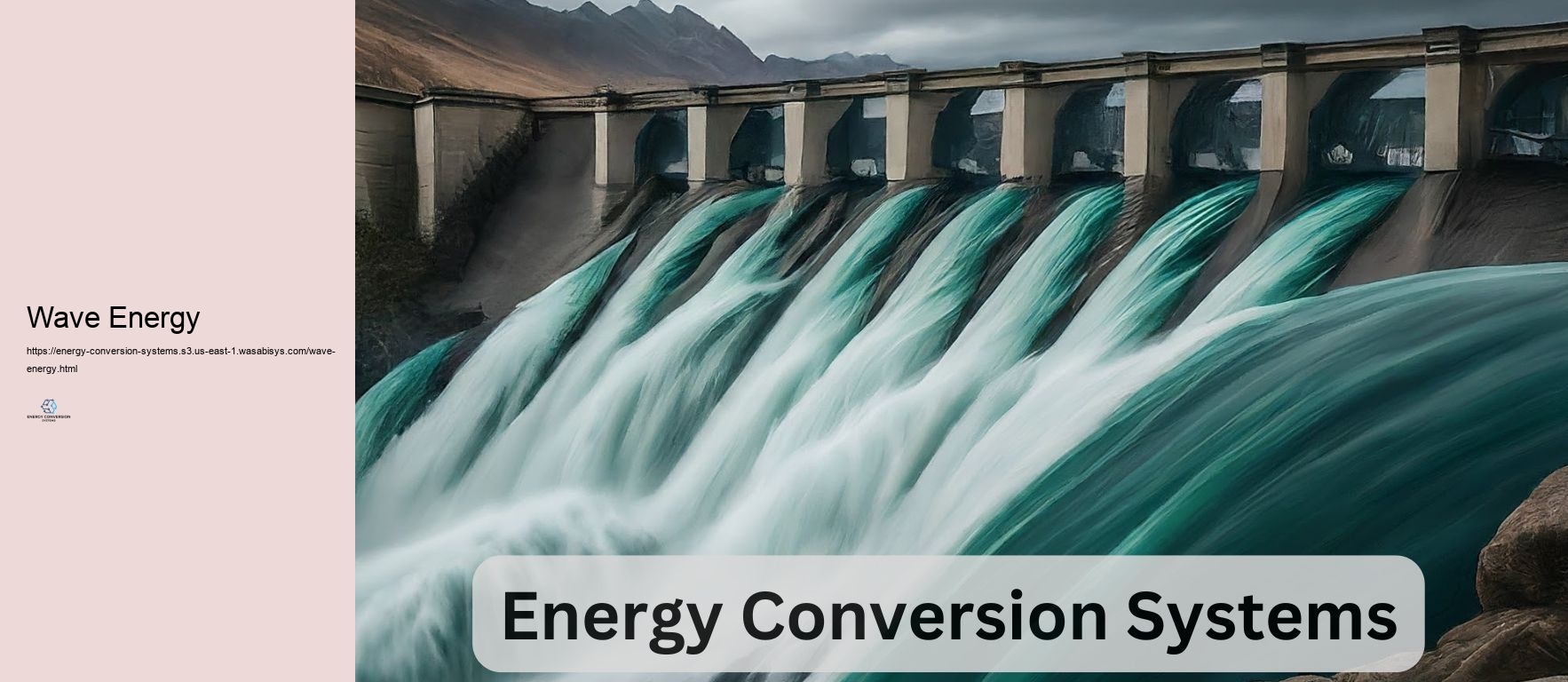

Energy conversion systems play a crucial function in contemporary culture, making it possible for the transformation of various forms of energy into better and useful kinds. These systems are standard to power generation, transport, commercial procedures, and day-to-day modern technologies. Comprehending the principles and applications of energy conversion systems is vital for developers, policymakers, and anyone considering the field of energy. At its core, energy conversion is controlled by the policies of thermodynamics. The initially legislation of thermodynamics, which specifies that energy can not be developed or damaged yet simply transformed from one kind to another, is the structure of all energy conversion systems. The Second guideline introduces the concept of decline and performance, describing why no energy conversion treatment can be 100% effective. These fundamental ideas underpin the design and operation of all energy conversion systems. One of one of one of the most common and substantial energy conversion systems is the thermal nuclear power plant. Wave Energy These centers convert the chemical energy saved in nonrenewable fuel resources (such as coal, oil, or gas) or nuclear gas into electrical energy. The process generally involves melting the fuel to cozy water, producing vapor that drives a generator connected to a generator. Wave Energy This system, based upon the Rankine cycle, is an archetype of transforming thermal energy to mechanical energy and afterwards to electrical energy. Modern thermal nuclear power plant usage various techniques to increase effectiveness, such as supercritical vapor problems and consolidated cycle systems. Renewable resource systems stand for another important classification of energy conversion. Solar photovoltaic or pv or pv (PV) panels convert light energy right into electric energy with the photoelectric impact. Wind generators modification the kinetic energy of transferring air into mechanical energy and afterwards right into power. Hydroelectric nuclear power plant harness the possible energy of water stored at altitude, changing it to power through wind generators and later on to electrical energy. Each of these systems has its special concepts and challenges, nonetheless all satisfy of converting naturally happening energy right into more functional types. Inner melting engines, typically made use of in transportation and some power generation applications, convert the chemical energy in fuel into power with regulated surges. These engines, whether gas or diesel, operate thermodynamic cycles (such as the Otto cycle or Diesel cycle) that include compression, combustion, development, and exhaust stages. The efficiency of these engines has been continually boosted through innovations in products, gas shot systems, and exhaust gas treatment modern innovations. Gas cells mean an innovative energy conversion system that directly transforms chemical energy into electric energy without burning. These gizmos use electrochemical actions to produce electric power, with hydrogen being a common gas. Gas cells have applications ranging from mobile source of power to huge repaired power generation, and they usage the capacity for high performance and reduced exhausts. Heatpump and refrigeration systems are energy conversion systems that transfer warmth from one location to an added, properly transforming electrical energy into thermal energy transfer. These systems, which operate the vapor compression cycle or absorption cycle, are widely used for home heating, a/c, and refrigeration in household, service, and industrial arrangements. The effectiveness of heatpump is normally expressed as a coefficient of performance (COP), which can be greater than one, as they transfer heat as opposed to create it directly. Electrochemical energy conversion systems, such as batteries and supercapacitors, play an essential function in energy storage area and portable power applications. These devices change chemical energy right into electrical energy (throughout discharge) and vice versa (during invoicing). The concepts of electrochemistry regulate their treatment, with ongoing research focusing on boosting energy density, power density, and cycle life. Thermoelectric tools represent a distinct kind of energy conversion, straight transforming temperature level distinctions right into electric energy (Seebeck effect) or making use of electrical energy to establish a temperature level distinction (Peltier impact).
Energy conversion modern-day innovations most likely to the forefront of transforming specifically just how we harness and use energy, playing a vital feature in the shift in the direction of lasting and efficient energy systems. From photovoltaics to gas cells, these developments include a varied range of systems that convert all-natural energy resources right into useful kinds, such as power, warm, and gas. Each modern-day technology runs distinctive principles and is healthy to information applications, utilizing distinctive advantages and challenges. Identifying these technologies is needed for advancing energy services that address global energy demands while decreasing ecological impact. Photovoltaics (PV) represent among one of the most widely recognized types of solar power conversion. These systems usage semiconductor products, generally silicon, to change sunlight directly right into power via the solar result. When sunlight strikes the area of a PV cell, it excites electrons, creating an electrical existing. Solar technology has sophisticated substantially throughout the years, with technologies in materials and style bring about enhanced efficiency and reduced costs. Occurring innovations, such as thin-film solar batteries and organic photovoltaics, are pushing the borders of efficiency and flexibility, making solar power additional easily accessible and versatile to different applications, from residential roof coverings to massive solar ranches. Concentrated solar power (CSP) is an added solar energy conversion advancement that differs from photovoltaics by making use of mirrors or lenses to concentrate sunlight onto a little place, typically a receiver. The focused light is converted into warmth, which is after that used to produce steam that drives a wind generator linked to an electric generator. CSP systems are particularly trusted in regions with high directly sunlight and can incorporate thermal energy storage space solutions to give power also when the sunlight is not radiating. This capability to shop energy as heat allows CSP plants to use a more secure and dependable power outcome contrasted to typical solar PV systems. Fuel cells are a functional energy conversion development that develops electric energy with an electrochemical response, typically entailing hydrogen and oxygen. Unlike combustion-based power generation, fuel cells generate electric power without losing gas, resulting in minimized exhausts and higher performance. There are numerous kinds of fuel cells, each differentiated by the electrolyte used and the operating temperature level range. Polymer electrolyte membrane layer (PEM) gas cells, for instance, are well-known for their high power thickness and are commonly utilized in transport applications, such as gas cell lorries. Solid oxide fuel cells (SOFCs), on the numerous other hand, run at greater temperature levels and ideal for repaired power generation and industrial applications. Hydroelectric power is a reputable energy conversion modern innovation that harnesses the kinetic energy of streaming water to create power. By transmitting water with wind turbines, hydroelectric plants transform the energy of transferring water right into power, which is after that changed right into electrical energy by generators. This innovation is really efficient and can provide a regular and trustworthy power supply, making it a foundation of renewable resource profiles in a number of countries. Nevertheless, the environmental result of large hydroelectric projects, such as atmosphere disruption and changes to water environments, requires careful preparation and administration. Wind energy conversion technologies capture the kinetic energy of wind taking advantage of wind turbines, which convert it right into power and eventually right into electricity. Wind generators are normally placed in areas with strong and consistent wind patterns, such as seaside regions and open degrees. Developments in generator design, such as bigger rotor dimensions and taller towers, have dramatically boosted the efficiency and capability of wind power generation. Offshore wind ranches are in addition getting grip, supplying the possibility for substantial energy generation with marginal land usage influence. Geothermal energy conversion usage the Planet inner warmth to generate electric energy and deal straight home heating applications. Geothermal power plants usage vapor or cozy water from underground containers to drive wind generators and create electrical energy. This contemporary technology is highly reliable and can offer a constant power supply, as geothermal sources are exempt to the irregularity seen in solar and wind energy. In addition, geothermal systems can be used for right heating applications, such as location home heating and greenhouse farming, a lot more enhancing their comfort. Biomass energy conversion consists of utilizing all-natural products, such as plant and animal waste, to produce warmth, electric power, or biofuels. Biomass can be traded energy through different procedures, including burning, gasification, and anaerobic digestion. This development gives the benefit of utilizing waste items and can contribute to waste monitoring services. However, the sustainability of biomass energy relies on the source of the biomass and the strategies made use of for farming and harvesting. Tidal and wave energy conversion developments harness the energy of sea trends and waves to create power. Rankine Cycle Systems Tidal nuclear power plant generally take advantage of batteries or undersea wind generators to document the energy of moving water, while wave energy converters draw out energy from the surface area motion of waves. These innovations are still in the creating stages yet hold promise for giving a credible and foreseeable resource of renewable resource, especially for seaside areas. The landscape of energy conversion modern-day innovations varies and promptly progressing, driven by the demand for lasting and efficient energy solutions. From photovoltaics and focused solar power to gas cells and hydroelectric systems, each innovation materials unique benefits and obstacles. By progressing these innovations and integrating them right into the worldwide energy system, we can move in the direction of a more sustainable and resistant energy future, decreasing our dependancy on nonrenewable fuel sources and minimizing environmental influence. As {research and development remain to push the borders of what is possible, the prospective for ingenious energy conversion services to modification our energy landscape keeps vast and motivating.
Energy conversion systems are vital to modern culture, playing a vital feature in changing raw energy sources right into usable power that gas homes, industries, and transport. These systems integrate a wide variety of modern innovations and processes created to change energy from one form to one more, such as transforming chemical energy in fuels to mechanical energy in engines or electric energy in nuclear power plant. A complete examination of the crucial elements in energy conversion systems reveals the ins and out and elegance associated with efficiently using and utilizing energy sources. Recognizing these aspects is required for optimizing performance, increasing performance, and reducing environmental influence. The beginning point of any type of type of energy conversion system is the energy resource, which can be sustainable or non-renewable. Renewable resource resources consist of solar, wind, hydroelectric, geothermal, and biomass, while non-renewable resources integrate nonrenewable fuel sources like coal, oil, and gas, along with atomic energy. The option of energy resource considerably influences the layout and operation of the conversion system, as each source has distinctive attributes, such as access, energy thickness, and eco-friendly result. As an instance, solar energy systems depend on solar batteries or solar thermal fanatics to capture sunlight, while fossil fuel-based systems usage shedding procedures to launch energy maintained in chemical bonds. At the heart of any kind of energy conversion system is the energy conversion device, which changes the primary energy source right into a numerous kind of energy. Typical conversion gadgets include wind turbines, engines, generators, and gas cells. Wind turbines, utilized in both nonrenewable gas resource and renewable energy systems, convert kinetic energy from heavy steam, water, or wind right into power, which is then changed right into electric energy by generators. Inside burning engines, prevalent in transport, convert chemical energy from gas right into mechanical energy with regulated surges. Fuel cells, on the numerous other hand, right transform chemical energy from hydrogen or other gas right into electrical power through electrochemical responses, using high efficiency and low discharges. Heat exchangers are vital elements in countless energy conversion systems, specifically those entailing thermal treatments. These devices help in the transfer of cozy in between 2 or a lot more liquids without blending them, boosting the performance of energy conversion. In nuclear power plant, warmth exchangers are made use of to action warmth from combustion gases to water, producing heavy steam that drives wind turbines. In cooling and heating systems, they transfer warmth in between interior and outside settings, managing temperature level and improving energy effectiveness. The style and item selection for cozy exchangers are essential for maximizing cozy transfer rates and decreasing energy losses. Control systems are essential for the safe and dependable treatment of energy conversion systems. They check and control various specifications, such as temperature level, anxiety, circulation rate, and voltage, making sure that the system runs within defined constraints and reacts appropriately to modifications popular or running conditions. Advanced control systems make use of noticing devices, actuators, and solutions to enhance efficiency, improve dependability, and reduction energy usage. In contemporary nuclear power plant, digital control systems allow real-time security and automation, allowing chauffeurs to make data-driven decisions and accomplish anticipating maintenance strategies. Energy storage space parts are significantly essential in energy conversion systems, specifically those relying on persisting sustainable resources like solar and wind. Storage systems, such as batteries, flywheels, and pumped hydro storage space, shop excess energy created throughout durations of low demand and launch it when need is high, ensuring a stable and reputable power supply. The mix of energy storage room enhances the adaptability and resilience of energy systems, allowing much better lots monitoring and decreasing dependence on fossil fuel-based back-up power. The improvement of sophisticated storage space technologies, such as lithium-ion and solid-state batteries, remains to drive improvements in energy thickness, performance, and cost-effectiveness. As quickly as energy is converted into a valuable kind, it needs to be moved and spread to end-users. Kinetic Energy Systems Transmission and circulation systems compose a network of transformers, high-voltage line, substations, and circulation lines that supply power from nuclear power plant to homes, solutions, and industries. Efficient transmission and circulation are vital for decreasing energy losses and ensuring a relied on power supply. Technologies such as high-voltage straight existing (HVDC) transmission and wise grid developments are enhancing the performance, ability, and integrity of power networks, helping in the mix of renewable resource sources and improving grid checking. Environmental control systems are essential to energy conversion systems, particularly those consisting of combustion processes. These systems are created to reduction the ecological impact of energy conversion by reducing discharges of impurities such as sulfur dioxide, nitrogen oxides, particle issue, and carbon dioxide. Technologies such as scrubbers, discerning catalytic decrease (SCR), and carbon capture and storage space (CCS) are utilized to catch and deal with discharges prior to they are launched right into the environment. The execution of environmental protection systems is necessary for consistency with eco-friendly guidelines and for minimizing the effect of energy conversion on air excellent quality and setting modification. Improving the performance of energy conversion systems is an essential focus for lessening energy use and environmental impact. Performance improvements can be achieved via numerous ways, such as enhancing the design and operation of conversion gizmos, applying innovative products and coatings, and integrating waste heat recovery systems. Consolidated cycle nuclear power plant, which make use of both gas and vapor wind generators, exhibit performance enhancements by capturing and making use of waste heat from gas generators to create added electrical power. Ongoing {research and development efforts continue to uncover new products, modern technologies, and procedures that can a lot more increase the efficiency and sustainability of energy conversion systems. The essential components of energy conversion systems are crucial to altering raw energy resources into helpful power efficiently and sustainably. By identifying and improving these elements, we can boost the effectiveness, stability, and ecological compatibility of energy systems, pleasing the expanding requirement for tidy and reliable energy options. As technological advancements remain to progression, the potential for development in energy conversion systems remains to be vast, providing chances to take care of the barriers of energy safety and security, environment adjustment, and lasting growth.
Discover the latest advancements in energy conversion systems, from solar and wind to fuel cells and biomass! Learn how these innovations are driving sustainable energy solutions for a cleaner, more efficient future.https://t.co/9SfMjPHIu9
— Turbine Training And Operation (@turbinetraine) August 25, 2024

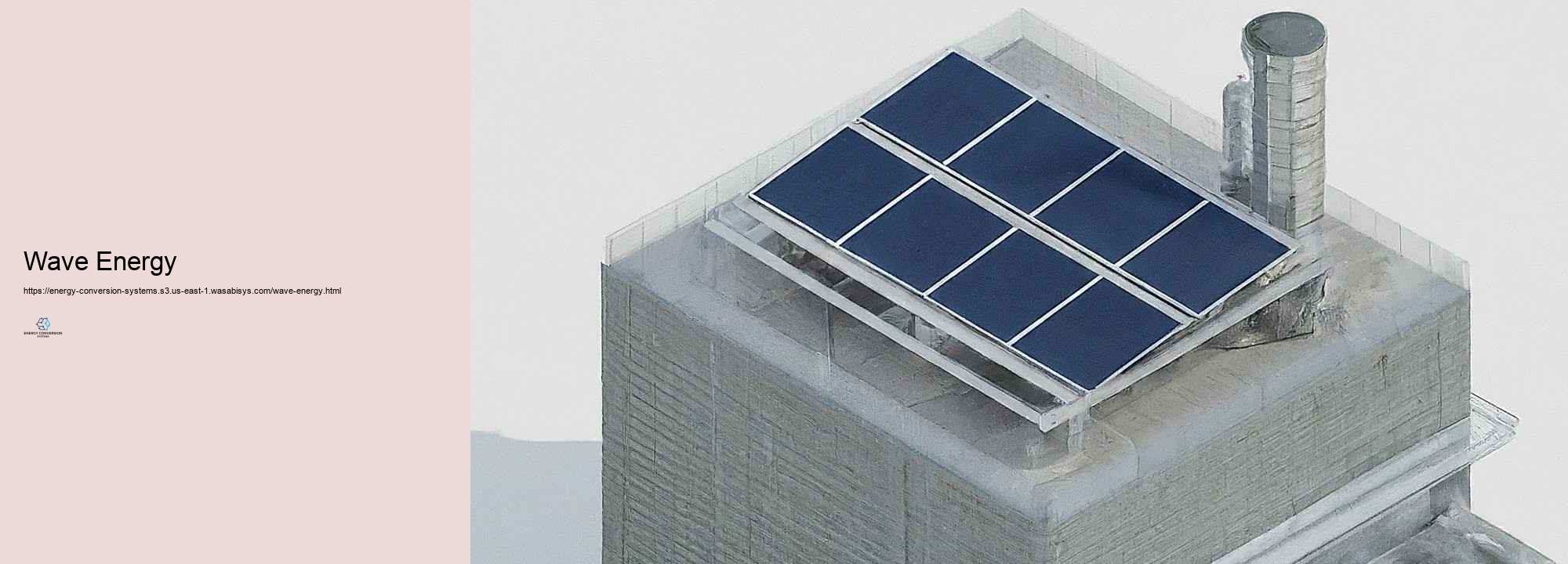
Improving performance in energy conversion is a critical unbiased in the quest of lasting and affordable energy manufacturing. As global energy need stays to climb, improving the efficiency of energy conversion procedures has become increasingly important for decreasing source consumption, minimizing environmental impacts, and guaranteeing energy safety and protection. This venture includes a variety of strategies and innovations throughout many energy industries, from standard fossil fuel-based systems to renewable energy modern technologies. Among the primary areas of focus for improving energy conversion efficiency remains in thermal nuclear power plant, which continue to be a significant resource of electrical power worldwide. Advanced melting modern technologies, such as supercritical and ultra-supercritical vapor cycles, have in fact been established to raise the efficiency of coal-fired nuclear reactor. These systems run at greater temperature levels and stress than traditional plants, allowing for higher thermal efficiency and lowered gas intake. In a comparable means, combined cycle gas generator (CCGT) plants, which utilize both gas and vapor wind generators, can achieve efficiencies of approximately 60%, dramatically higher than standard single-cycle plants. Waste warmth recovery systems represent another essential approach for enhancing energy conversion efficiency. In lots of industrial processes and power generation systems, a substantial amount of warmth is shed to the atmosphere. By implementing innovations such as all-natural Rankine cycles (ORC) or thermoelectric generators, this waste warmth can be recorded and traded important power. This not simply increases overall system efficiency however furthermore lowers the need for added energy input, triggering established you back financial savings and lowered eco-friendly result. In the realm of renewable energy, continual modern technologies are driving renovations in energy conversion performance.
The combination of renewable resource sources right into conversion systems is a transformative technique reshaping the worldwide energy landscape. As the globe seek sustainable options to satisfy boosting energy demands while alleviating environmental affects, the feature of renewable resource in conversion systems happens seriously vital. This assimilation requires incorporating renewable resources such as solar, wind, hydro, and biomass with regular energy systems to establish crossbreed systems that boost energy manufacturing, increase efficiency, and lessen carbon exhausts. By leveraging the staminas of both eco-friendly and standard energy resources, these systems use a path to an extra durable and lasting energy future. Crossbreed energy systems are at the facility of incorporating renewable resource resources right into conversion systems. These systems integrate numerous energy resources to supply a constant and reputable power supply.
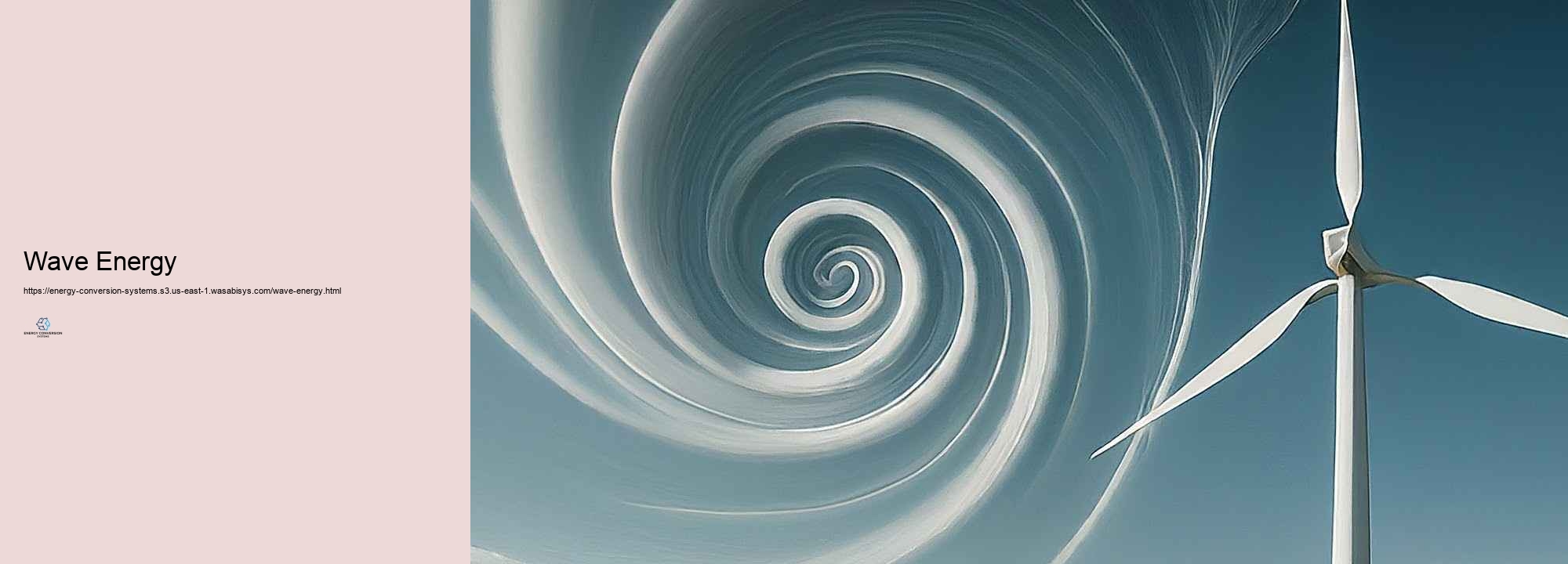
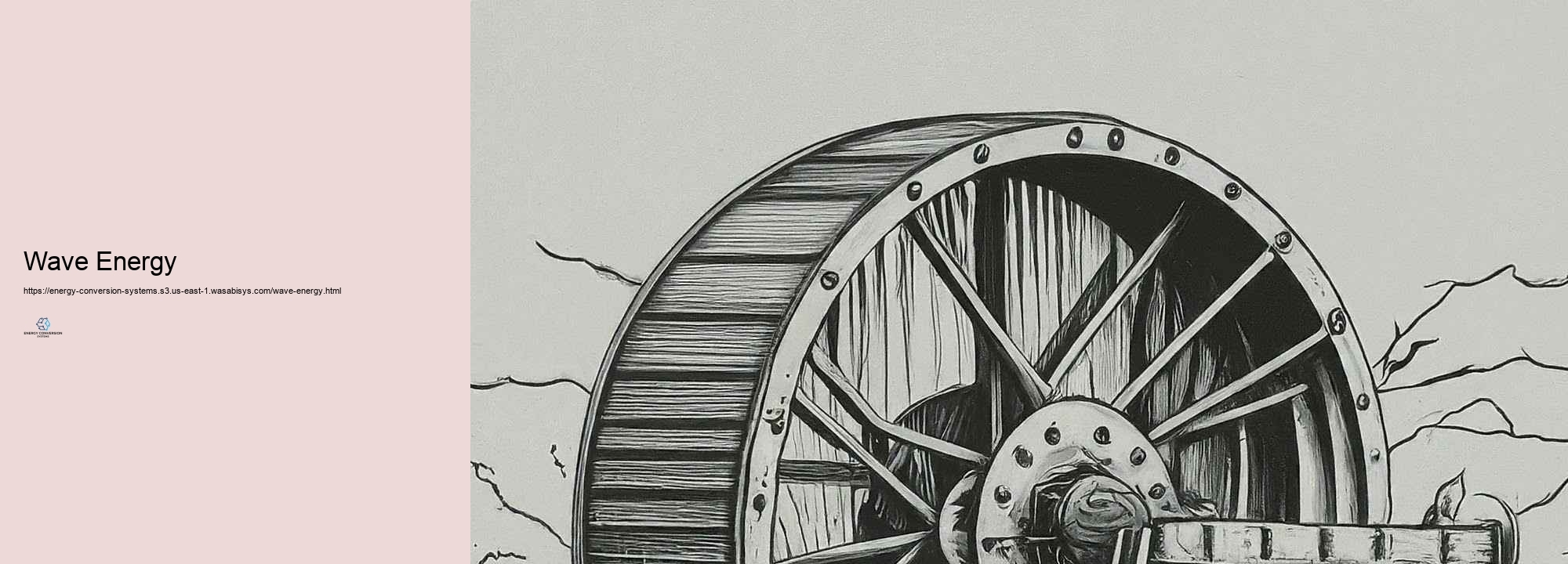
Energy conversion system design is a complex area that encounters different challenges in the mission for a lot more trusted, lasting, and affordable services. As worldwide energy needs stay to rise and ecological issues intensify, designers and researchers are tasked with creating cutting-edge approaches to overcome these problems. This introduction discovers the crucial problems in energy conversion system layout and the emerging alternatives that are forming the future of energy advancement. Among the essential troubles in energy conversion system format is boosting performance. All energy conversion procedures consist of some level of energy loss, as determined by the regulations of thermodynamics. For thermal systems, such as nuclear reactor, this inadequacy is typically turned up as waste heat. Managing this difficulty ask for a diverse strategy. Advanced materials that can withstand better temperatures and pressures are being developed, enabling far more reputable thermodynamic cycles. As an example, supercritical and ultra-supercritical vapor cycles in coal-fired nuclear power plant can complete greater efficiency by running at unbelievably high temperatures and pressures. In internal melting engines, modern technologies in burning chamber format, gas shot systems, and exhaust gas recirculation are pressing the borders of performance. Another significant difficulty is the intermittency and irregularity of renewable resource resources. Solar and wind power, while clean and increasingly cost-competitive, are not consistently conveniently available. This variability presents obstacles for grid safety and dependability. Solutions to this difficulty consist of the growth of advanced energy storage area systems, such as grid-scale batteries, pumped hydro storage space, and developing technologies like flow batteries. In addition, the format of crossbreed systems that incorporate various energy sources (e.g., solar-thermal crossbreed plants) can assistance reduce the intermittency problem. Smart grid technologies and need comments systems are furthermore being developed to far better manage the balance between variable supply and demand. Ecological impact is an essential variable to think about in energy conversion system design. Decreasing discharges, especially from fossil fuel-based systems, is a significant problem. Solutions consist of the advancement of carbon capture and storage area (CCS) technologies, which mean to capture carbon dioxide tires prior to they enter the atmosphere. Advanced burning innovations, such as oxy-fuel combustion and chemical looping melting, are being checked into to help in far more reliable carbon capture. For renewable energy systems, difficulties include lessening the ecological impact of making processes and handling concerns like wildlife defense in wind cattle ranch layout. Scalability and cost-effectiveness existing persisting difficulties in energy conversion system layout. Lots of appealing modern technologies that work well in laboratory settings face difficulties when scaled about commercial degrees. For example, gas cells have revealed excellent prospective for dependable energy conversion, yet challenges in scaling up producing and reducing costs have really limited their extensive cultivating. Solutions consist of study into new items and manufacturing processes to decrease costs and increase toughness. Furthermore, modular design strategies are being discovered to help with simpler scaling and customization of energy systems. The assimilation of different energy conversion systems poses another significant challenge. As the energy landscape comes to be a lot more varied, with a mix of conventional and renewable sources, making systems that can collaborate efficiently winds up being essential. Solutions include the development of innovative control systems and power electronic devices that can deal with the details of including numerous energy sources. On the internet nuclear power plant concepts, which aggregate and coordinate distributed energy sources, are coming to be a solution to this combination difficulty. Material constraints existing reoccuring obstacles in energy conversion system design. Great deals of sophisticated energy contemporary innovations call for uncommon or pricey products, which can limit their scalability and economic feasibility. Battery Storage Systems As an example, some high-efficiency solar batteries depend on uncommon planet components. Solutions to this obstacle consist of research study right into alternating materials, such as earth-abundant elements for solar panels, and the innovation of reusing technologies to recoup and reuse important materials from shut down systems. Thermal monitoring is a vital obstacle in great deals of energy conversion systems. Reliable cooling is crucial for preserving performance and long life, particularly in high-temperature applications like gas generators or focused solar power systems. Solutions contain advanced cooling contemporary innovations, such as closed-loop vapor a/c for gas generator blades, and the growth of brand-new products with much much better heat-resistant buildings. In digital systems, advancements in warm sink design and making use of phase-change products for thermal monitoring are being discovered. Energy storage stays a substantial challenge, specifically for applications needing high energy thickness or quickly charge/discharge cycles. While lithium-ion batteries have in fact seen significant enhancements, they still encounter constraints in energy density and cycle life. Solutions being checked out consist of the innovation of solid-state batteries, which assurance greater energy thickness and improved safety and protection, and research into novel chemistries like lithium-sulfur or lithium-air batteries. For grid-scale storage room, circulation batteries and innovative mechanical storage area systems (like compressed air energy storage) are being developed. The obstacle of system honesty and upkeep is critical, particularly as energy systems become a great deal more complex and spread. Ensuring long-lasting honesty while lowering maintenance demands is necessary for the monetary stability of energy conversion systems. Solutions include the development of advanced checking and analysis systems, generally leveraging expert system and expert system solutions to predict and protect against failings. The principle of self-healing systems, which can automatically discover and take care of minor concerns, is likewise being checked out. Versatility in energy conversion systems is becoming increasingly vital as energy grids develop. Systems call for to be able to react quickly to modifications sought after and supply, particularly with the raising seepage of variable renewable energy sources. Solutions consist of the growth of more versatile thermal nuclear power plant that can increase and down immediately, the use of energy storage space systems to give grid options, and the execution of demand responses technologies that can readjust energy intake based upon grid issues. The area of energy conversion system layout manage many barriers in the pursuit of a great deal more effective, lasting, and trusted energy solutions. Nevertheless, these difficulties are driving development across a big variety of modern technologies and methods. From innovative materials and distinct system creates to the adaptation of electronic modern innovations and sensible control systems, the services being developed are not simply taking care of existing obstacles however also leading the way for the future generation of energy conversion systems. As {research and development proceed, these options assurance to boost the international energy landscape, relocating us towards an added lasting and dependable energy future.
The result of energy conversion systems on environmental sustainability is extensive and complicated, affecting every little thing from greenhouse gas discharges and source exhaustion to environment health and biodiversity. As the worldwide demand for energy remains to climb, driven by populace growth and economic growth, the demand for lasting energy solutions comes to be considerably urgent. Energy conversion systems, which transform raw energy sources right into practical types such as power, warm, and fuel, play an important duty in this change. By taking a look at the ecological effects of different energy conversion modern technologies, we can much better comprehend their payments to sustainability and acknowledge paths for improvement. Conventional energy conversion systems, especially those relying upon nonrenewable fuel sources such as coal, oil, and gas, have actually historically been significant factors to ecological deterioration. The melting of these gas launches considerable quantities of co2 (CARBON DIOXIDE) and numerous other greenhouse gases into the atmosphere, driving environment modification and its linked effects, such as increasing international temperature level degrees, sea-level rise, and extreme climate occasions. Furthermore, nonrenewable fuel source extraction and taking care of can reason habitat destruction, soil and water contamination, and air contamination, a lot more increasing ecological obstacles. On the various other hand, renewable energy conversion systems, such as solar, wind, hydroelectric, and geothermal, offer a lot more lasting options by benefiting from natural energy steps that are abundant and replenishable. These systems typically develop bit to no straight tires throughout operation, substantially lowering their carbon impact contrasted to fossil fuel-based innovations. As an example, solar photovoltaics and wind turbines generate power without melting gas, preventing the release of CARBON DIOXIDE and different other pollutants. Hydroelectric power, while mainly emission-free throughout treatment, need to be extremely carefully handled to relieve potential ecological results, such as modifications in water flow and fish activity patterns. The adjustment to renewable energy conversion systems is necessary for achieving ecological sustainability, as it lines up with initiatives to reduced greenhouse gas tires and constraint global warming. By replacing fossil fuel-based systems with renewables, we can minimize the concentration of carbon dioxide in the ambience, reducing the progression of environment change and its damaging impacts on atmospheres and human societies. In addition, renewable energy systems typically ask for much less land and water than standard energy resources, decreasing their overall ecological footprint and shielding natural settings. Nonetheless, the implementation of renewable energy conversion systems is not without its challenges. The production, setup, and upkeep of these systems can have ecological impacts, including resource removal, waste generation, and land make use of adjustments. For instance, the manufacturing of photovoltaic panels involves utilizing uncommon and finite products, such as silicon and silver, in addition to potentially damaging chemicals. Wind wind turbine making calls for considerable quantities of steel and concrete, and their arrangement can effect neighborhood wild animals and landscapes. To address these problems, it is needed to embrace lasting techniques throughout the lifecycle of renewable energy systems, from design and manufacturing to deactivating and reusing. Energy storage area systems, which are vital to the reliable mix of renewable resource right into the grid, also have ecological ramifications. Batteries, as an example, rely on products like lithium, cobalt, and nickel, the removal and refining of which can cause ecological destruction and social problems. Establishing added lasting battery technologies, such as those based upon abundant and safe items, and boosting reusing procedures are important actions in the direction of reducing the environmental impact of energy storage space. Past discharges and resource usage, energy conversion systems can likewise influence eco-friendly sustainability through their results on biodiversity and communities. Large energy projects, whether eco-friendly or fossil-based, can cause setting fragmentation, wild animals variation, and modifications in land use patterns. For instance, the building of hydroelectric dams can overload large areas of land, disrupting earthbound and water eco-friendly communities. Wind ranches, while normally having a minimized impact, can present risks to bird and bat populations otherwise efficiently sited and taken care of. To reduce these influences, it is necessary to do comprehensive ecological evaluations and take part in cautious preparation and stakeholder assessment throughout the development of energy jobs. Along with technological improvements, plan and regulating structures play a vital function fit the eco-friendly sustainability of energy conversion systems. Federal federal governments and international companies can incentivize the promoting of tidy energy technologies with aids, tax credit report records, and discharges trading schemes. Wind Turbines They can additionally carry out rigid eco-friendly standards and plans to warranty that energy tasks reduction their environmental impact and include positively to sustainability objectives. Public recognition and participation are likewise important, as notified citizens can promote for sustainable energy strategies and methods, driving demand for cleaner and extra liable energy solutions. Inevitably, the influence of energy conversion systems on environmental sustainability rests on our capacity to introduce and change. By progressing {research and development in neat energy modern-day technologies, boosting performance, and growing partnership throughout markets and boundaries, we can quicken the transition to a more lasting energy future. Wave Energy This shift not just deals with journalism obstacles of environment modification and source depletion yet furthermore creates chances for economic development, job production, and improved way of living. As we make every effort to support energy demands with environmental stewardship, the ongoing evolution and optimization of energy conversion systems will be essential to completing an enduring and immune international energy system.
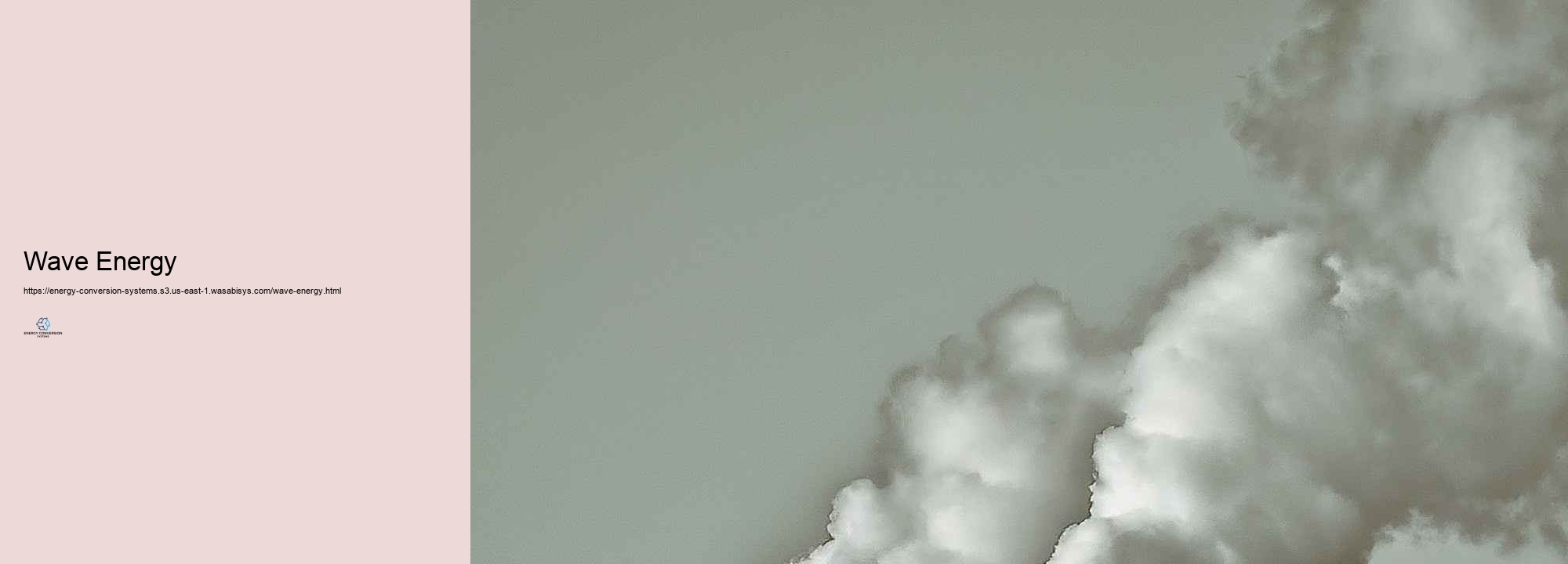
Energy conversion systems are technologies or processes that transform one form of energy into another, such as converting solar energy into electricity or mechanical energy into electrical energy.
Common types of energy conversion systems include solar photovoltaic panels, wind turbines, fuel cells, hydroelectric power systems, and geothermal energy converters.
Energy conversion systems improve efficiency by optimizing the process of converting energy from one form to another, reducing waste, and enhancing the overall output of usable energy.
Energy conversion systems are crucial in renewable energy as they enable the transformation of natural energy sources like sunlight, wind, and water into electricity, supporting sustainable power generation.
Challenges include optimizing efficiency, minimizing energy loss, integrating with existing grids, managing costs, and ensuring reliability and sustainability of the energy sources used.